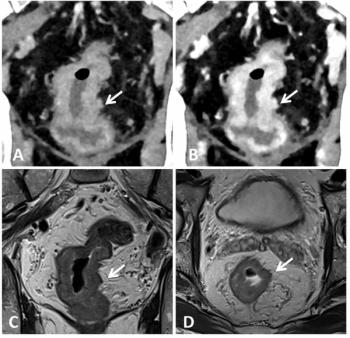
High-definition MR clears path to new applications
Studies so time-intensive that they have thus far been impractical may soon enter the mainstream as a result of enhancements to GE Healthcare’s Excite data pipeline.
Studies so time-intensive that they have thus far been impractical may soon enter the mainstream as a result of enhancements to GE Healthcare's Excite data pipeline.
HD (high-definition) MR, the latest version of this technology, is being showcased at the ECR. It promises to have an immediate impact on difficult applications such as brain scans of children and patients with Parkinson's disease. HDMR has a similarly positive effect on motion-sensitive studies of the heart and abdomen, and it speeds up MR mammography by allowing data acquisition from both breasts simultaneously. It even supports dynamic MR angiography of the legs.
"We have designed a system that brings new clinical relevance to the medical community and, in the end, to the patients," said Stefano Vagliani, GE's general manger for MR in Europe. "We created new electronic devices, new interfaces, and clinical software that really brings additional value."
New high-performance surface coils acquire the data that HDMR processes. An example is a 32-element peripheral vascular coil that extends below the knee and covers each foot with what looks like a ski boot. The new coil, in combination with HDMR, allows dynamic imaging of blood flow.
The increased data flow from this and other such coils, along with the advanced processing capabilities of HDMR, enable the capture of MR data in novel ways. One method, called Propeller, acquires data radially rather than in the conventional rectilinear fashion. Propeller is relatively insensitive to motion and is therefore ideally suited for patients prone to movement. LAVA (liver acquisitions with volume acceleration) cuts scan time for liver and other abdominal applications. An acquisition process that mimics echocardiography allows cardiac imaging without ECGs. Other such methods are in the works.
Newsletter
Stay at the forefront of radiology with the Diagnostic Imaging newsletter, delivering the latest news, clinical insights, and imaging advancements for today’s radiologists.



























